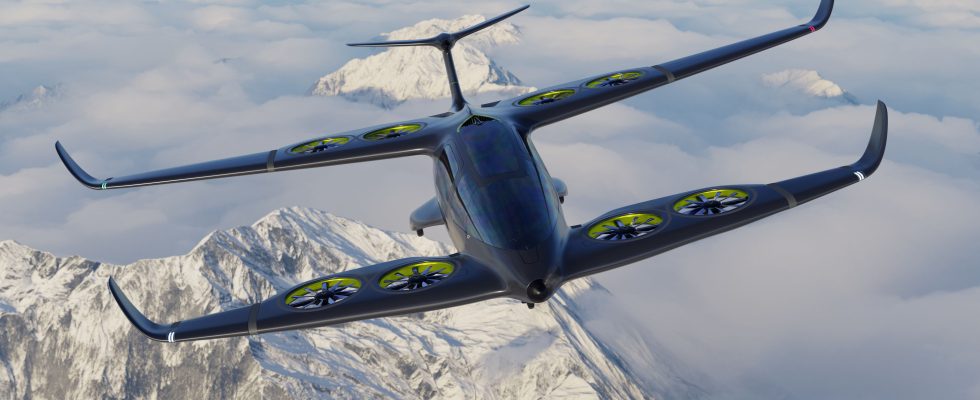At a time when calls for decarbonization are multiplying, the aeronautical world wants to be on the front line. In October 2022, the International Civil Aviation Organization (ICAO) set an ambitious goal of carbon neutrality by 2050. To achieve this, new technological solutions are hoped for quickly. Among them, the electric plane concentrates part of the expectations.
Many companies in the market
In this still fledgling field, Ascendance Flight Technologies seems to have a card to play. This start-up, created in Toulouse in 2018 by four former Airbus employees, is currently working on the development of a vertical take-off and landing aircraft powered by electricity and – for the moment – kerosene. Before this entrepreneurial adventure, the group of engineers had worked on the E-Fan, an electric aircraft prototype developed by the European manufacturer, then abandoned in 2017.
The model, called Atea, will be able to accommodate five people on board and aims for a range of 400 kilometers, while emitting 50 to 80% less CO2 compared to internal combustion engines and dividing noise pollution by four. In sight: the helicopter market. “Our aircraft will play a major role there because it brings a clear technological breakthrough”, assures Jean-Christophe Lambert, the company’s president and co-founder.
255 letters of intent to purchase
The young shoot has passed the tests on small-scale prototypes, and plans a full-scale test in 2024. We must go quickly: “This type of machine could quickly replace helicopters”, says Didier Bréchemier, head of the transport sector. within the consulting firm Roland Berger. Proof of the hopes placed in it, the Toulouse company, which recently raised funds of 21 million euros, signed 255 letters of intent to purchase “with operators in Europe, Asia and the United States”, specifies Jean-Christophe Lambert.
“I see this company as one of the players in the future of aeronautics, particularly on flights of a few hundred kilometers, anticipates Alexandre Scherer, investment director of the Irdi Capital fund, one of the first to have supported the start-up. The thermal and electric propulsion of the aircraft will provide it with more outlets.” This hybrid system, Ascendance Flight Technologies intends to offer it to other aircraft manufacturers. And thus ensure a greener and quieter vertical commercial take-off.
On the hydrogen side, a sluggish take-off
They do not yet cross the European sky. But by the end of the decade, hydrogen planes could connect Paris to Rodez or Strasbourg to Amsterdam. It is in any case the daring bet of the airline company Amelia, specialized in the rental of business jets. Unlike the giant Airbus, which is working on three propulsion concepts – including a futuristic-looking flying wing that can carry 100 to 200 passengers – the small company is betting on more modest devices, equipped with hydrogen tanks and fuel cells. . “The trial campaign has already started in the United States,” says Adrien Chabot, director of innovation at Amelia. It is difficult, however, to speak of a revolution. Hydrogen is not suitable for long-haul flights, the most CO2 emitters. Airbus, which focuses on intracontinental travel, hopes to market a first aircraft in 2035. “A schedule that is a little too ambitious”, warns Stéphane Andrieux, member of the Academy of Technologies. And not just for approval issues. Airlines are investing mainly in sustainable aviation fuels (DAC), compatible with current engines. And the more they do, the slower the transition to hydrogen will be.
